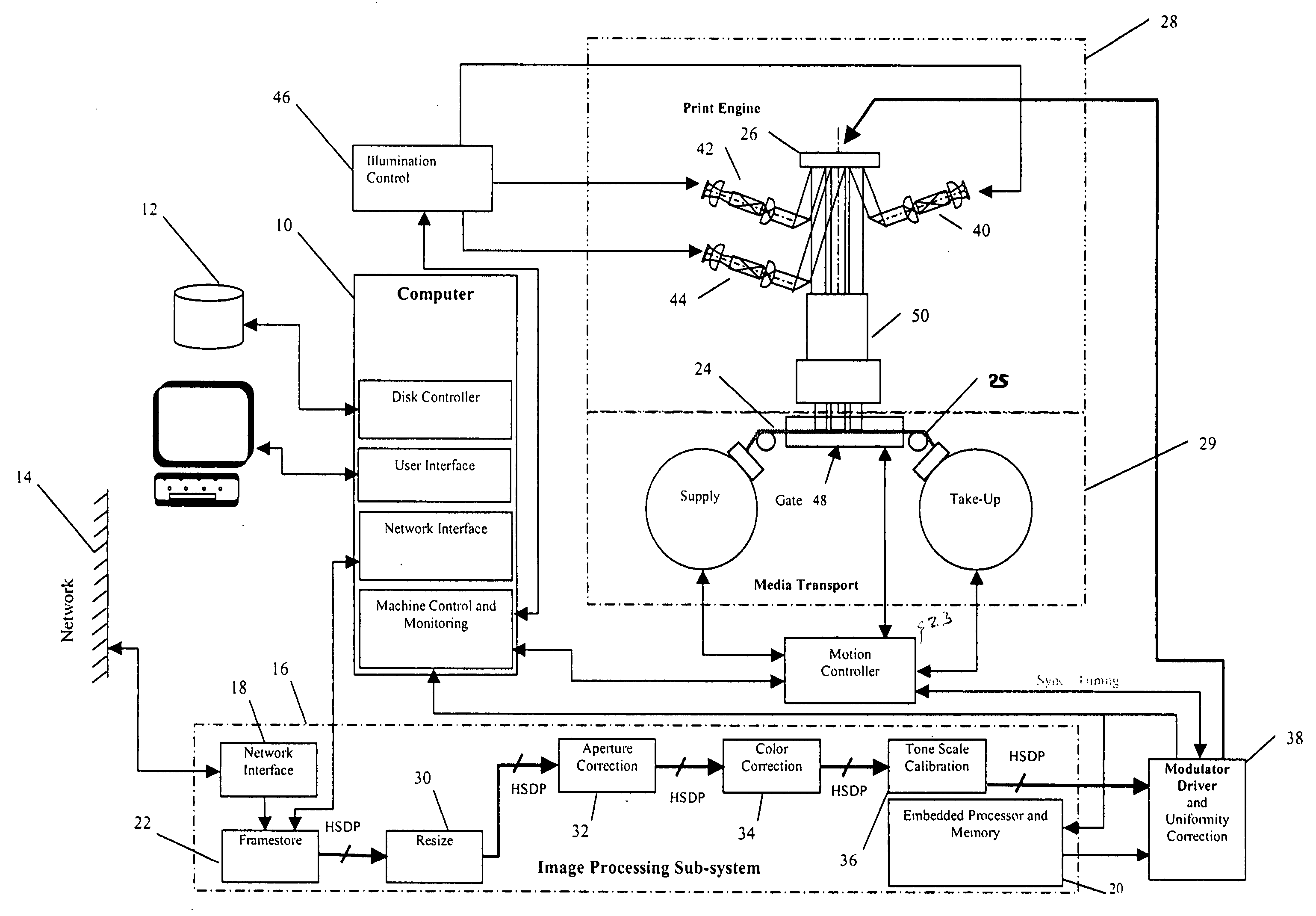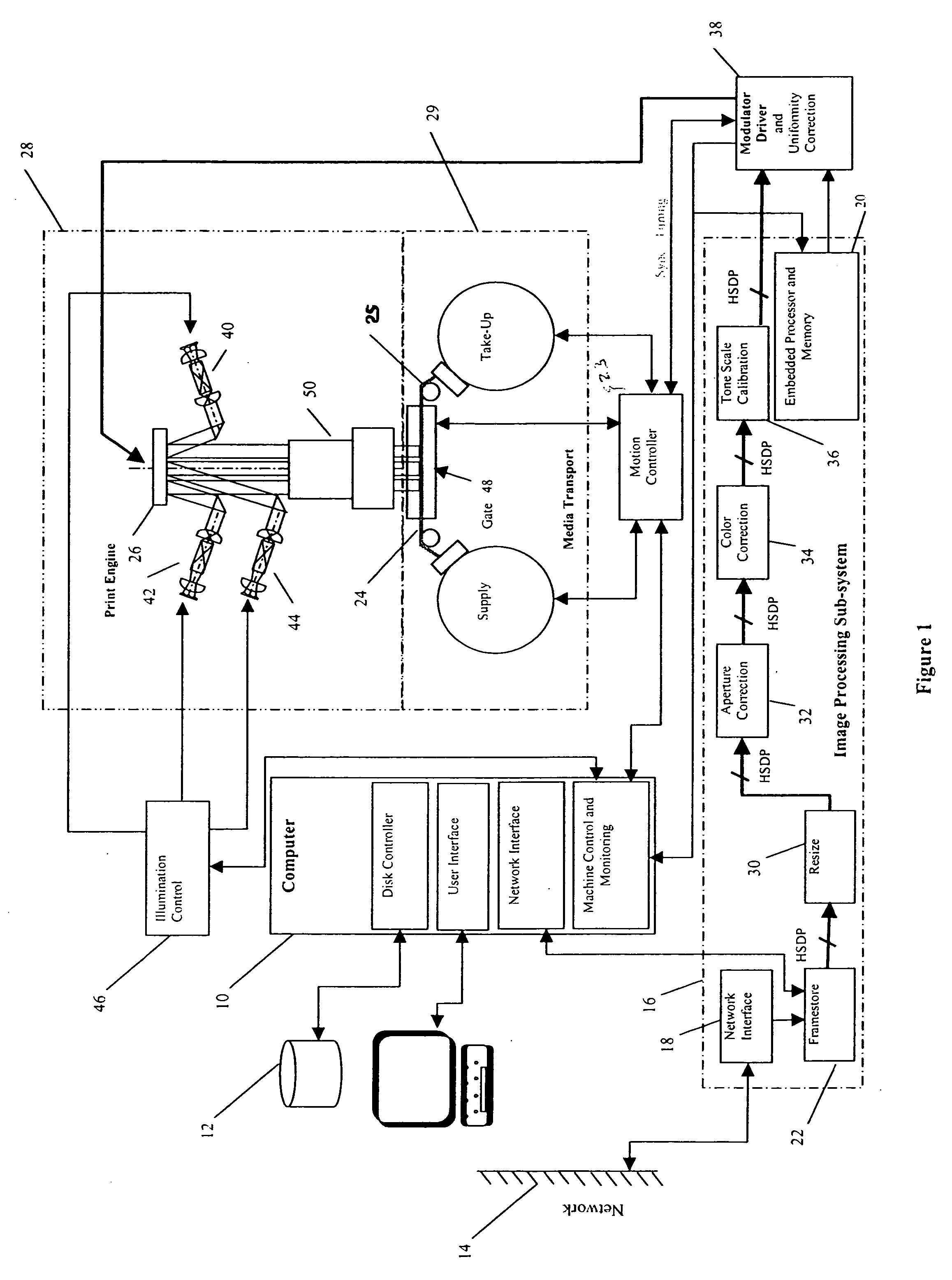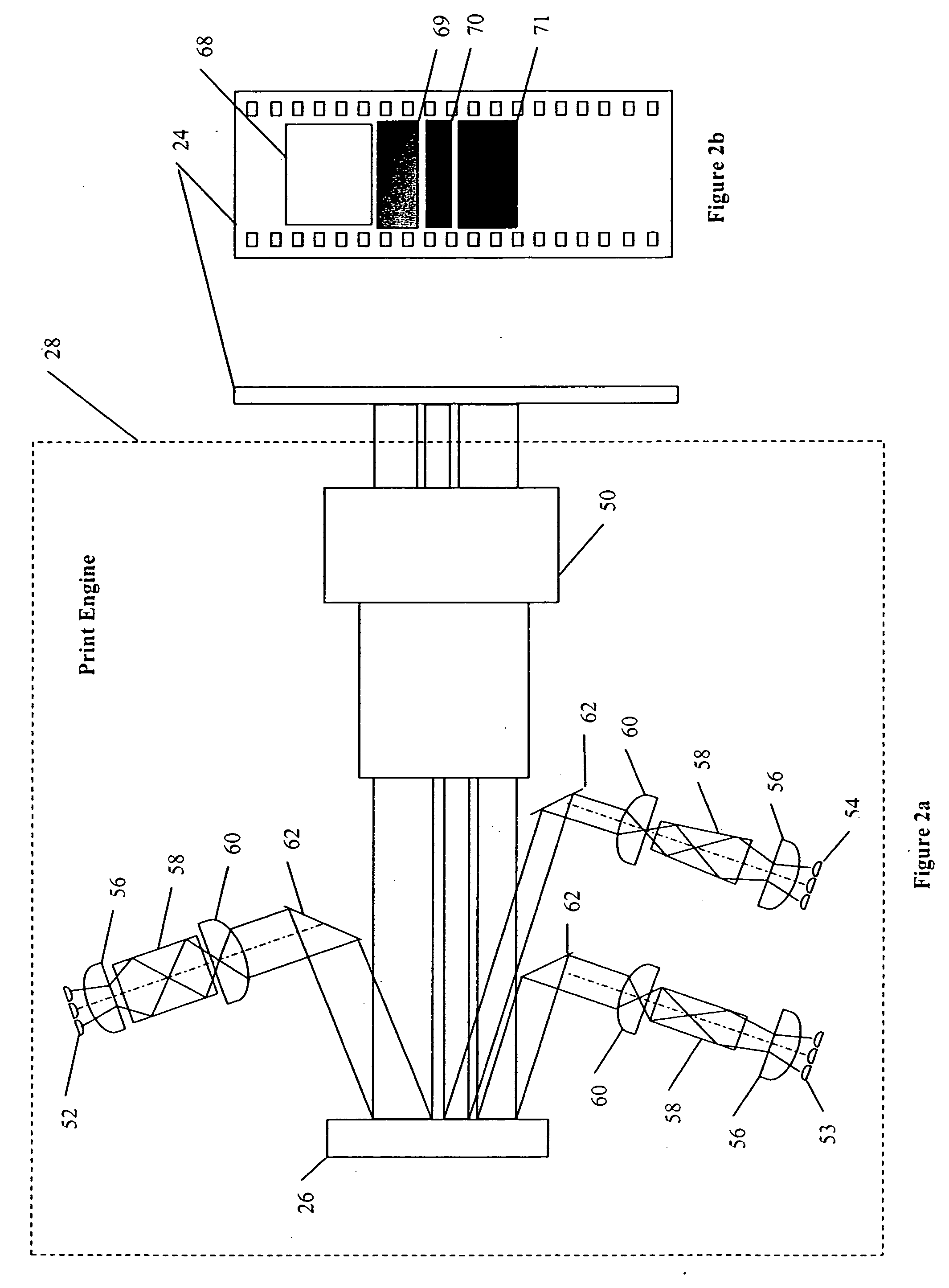High-speed continuous film writer
- Summary
- Abstract
- Description
- Claims
- Application Information
AI Technical Summary
Benefits of technology
Problems solved by technology
Method used
Image
Examples
Embodiment Construction
[0026] Image recording systems write digital data onto photosensitive media by applying light exposure energy. Such energy may originate from a number of different sources and may be modulated in a number of different ways. Image recording systems can be used for digital printing, whereby digital image data is used to print an image onto photosensitive paper or film. This invention specifically relates to the high-speed (multiple frames per second) writing of digital image data onto 35 mm color movie film.
[0027] Turning now to FIG. 1, an apparatus is shown for printing at least three separable image planes from a digital image file of a motion picture where the digital image file may be stored on a computer's 10 local disk 12 or on any convenient digital file storage means accessible to the computer where such means could be on an external network 14 storage means. As will become clearer, the digital image file will be used to activate a two-dimensional spatial modulator 26 to prov...
PUM
 Login to View More
Login to View More Abstract
Description
Claims
Application Information
 Login to View More
Login to View More - Generate Ideas
- Intellectual Property
- Life Sciences
- Materials
- Tech Scout
- Unparalleled Data Quality
- Higher Quality Content
- 60% Fewer Hallucinations
Browse by: Latest US Patents, China's latest patents, Technical Efficacy Thesaurus, Application Domain, Technology Topic, Popular Technical Reports.
© 2025 PatSnap. All rights reserved.Legal|Privacy policy|Modern Slavery Act Transparency Statement|Sitemap|About US| Contact US: help@patsnap.com



